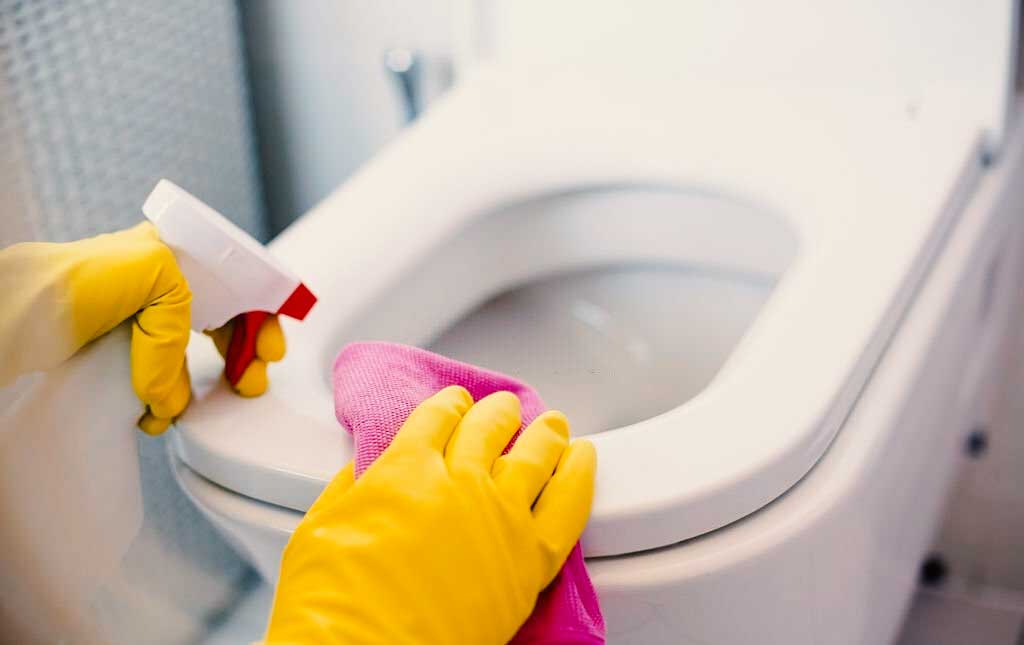How often should I deep clean my toilet as part of toilet hygiene? It is recommended to perform a routine deep clean at least once a week. This includes scrubbing the bowl and wiping down surfaces with disinfectant for a fresh and sanitary toilet environment.
In the bustling symphony of our daily lives, the significance of maintaining impeccable hygiene often extends to spaces where we spend a considerable amount of time – our bathrooms. As we navigate through the intricacies of modern living, the concept of types of toilet hygiene emerges as a crucial focal point in ensuring a clean and safe environment.
In this exploration, we’ll discuss the nuances of toilet hygiene, uncovering the diverse practices and products that contribute to the upkeep of our most private spaces. Get ready to start a journey through the realm of hygienic toilet practices that go beyond the ordinary, promising not just cleanliness, but a lifestyle anchored in well-being
What is Toilet Hygiene:
Toilet hygiene is far more than a cursory scrub or a spritz of air freshener; it’s a holistic approach encompassing an array of practices geared towards maintaining the highest standards of cleanliness. Beyond the routine act of flushing, it involves the judicious use of hygienic toilet practices that span from handwashing to meticulous toilet seat cleaning.
It’s a symphony of cleanliness, where every component plays a crucial role in the pursuit of a germ-free environment. Whether in public spaces or private sanctuaries, adhering to well-established toilet hygiene rules becomes paramount for personal well-being and societal health.
Importance of Toilet Hygiene:
Why is toilet hygiene more than just a set of mundane practices? The significance lies in its role as a guardian against the spread of diseases. Maintaining a clean toilet isn’t just about aesthetics; it’s about minimizing the potential for pathogen transmission.
Picture a world where every restroom adheres to toilet sanitation guidelines, reducing the risk of infections and promoting a cleaner environment. Beyond the tangible benefits, it’s socially imperative, reflecting a societal commitment to cleanliness.
By embracing proper toilet care, we contribute not only to our individual well-being but also to the collective health of our communities.
Types of Toilet Hygiene:
- Hand Hygiene: Effective hand hygiene, including thorough washing with soap and water, stands as the cornerstone of types of toilet hygiene. It’s the first line of defense against germs and bacteria, a practice ingrained in the broader context of personal hygiene.
- Toilet Seat Hygiene: The often-neglected toilet seat demands attention in the realm of toilet hygiene essentials. Cleaning it with a disinfectant after each use is imperative to prevent infections and maintain an optimal level of hygiene.
- Floor Hygiene: Extending beyond the visible surfaces, maintaining floor hygiene involves sweeping or mopping with a disinfectant. This practice not only ensures cleanliness but also prevents the inadvertent spread of germs.
- Toilet Bowl Hygiene: Scrubbing the toilet bowl and wiping down the lid with disinfectant constitutes an essential part of different toilet cleaning methods. This regular cleaning routine contributes significantly to a fresh and sanitized environment.
- Ventilation and Odor Control: Proper ventilation, coupled with an adequate flushing volume, emerges as a pivotal aspect of hygiene protocols for toilets. It not only controls unpleasant odors but also serves as an effective measure to reduce the spread of germs.
Toilet Hygiene Products:
To elevate the efficacy of your toilet hygiene practices, a myriad of specialized toilet hygiene products are available in the market. From toilet bowl cleaners designed to disinfect and remove stains to toilet seat cleaners tailored for optimal hygiene, these products form an arsenal against germs and bacteria.
The inclusion of hand sanitizers, floor cleaners, and disinfecting wipes further enhances the overall cleanliness of the restroom. Bathroom cleanliness tips extend beyond practices to include the strategic use of these products, ensuring a comprehensive approach to toilet hygiene.
Frequently Asked Questions (FAQs) – Types of Toilet Hygiene
What does “Types of Toilet Hygiene” encompass?
“Types of Toilet Hygiene” involves a range of practices aimed at maintaining cleanliness and sanitation in restrooms. It includes hand hygiene, toilet seat care, floor cleanliness, bowl scrubbing, and ventilation strategies.
Why is hand hygiene crucial in the context of toilet hygiene?
Effective hand hygiene is critical in preventing the spread of germs and bacteria. Thoroughly washing hands with soap and water after using the toilet is a fundamental practice in maintaining optimal toilet hygiene.
Are there specific products that enhance toilet hygiene?
Yes, various toilet hygiene products are available, including toilet bowl cleaners, seat disinfectants, floor cleaners, and disinfecting wipes. These products contribute to a comprehensive and effective approach to maintaining a clean restroom.
How does toilet hygiene contribute to overall health?
Toilet hygiene plays a vital role in minimizing the potential for pathogen transmission, reducing the risk of infections, and promoting a cleaner environment. It is a holistic approach that fosters individual well-being and contributes to the collective health of communities.
Conclusion:
In conclusion, the concept of “Types of Toilet Hygiene” transcends the ordinary and steps into the realm of meticulous practices and specialized products. It’s a commitment to maintaining not just cleanliness but optimal sanitation for the well-being of individuals and communities alike.
Embrace the nuances of hand hygiene, toilet seat care, floor cleanliness, bowl scrubbing, and ventilation strategies to foster a healthy environment.
Explore the world of best toilet cleaning products to enhance your hygiene routine, and remember, in the symphony of cleanliness, every note, from the first flush to the last wipe, contributes to a healthier and safer space.

